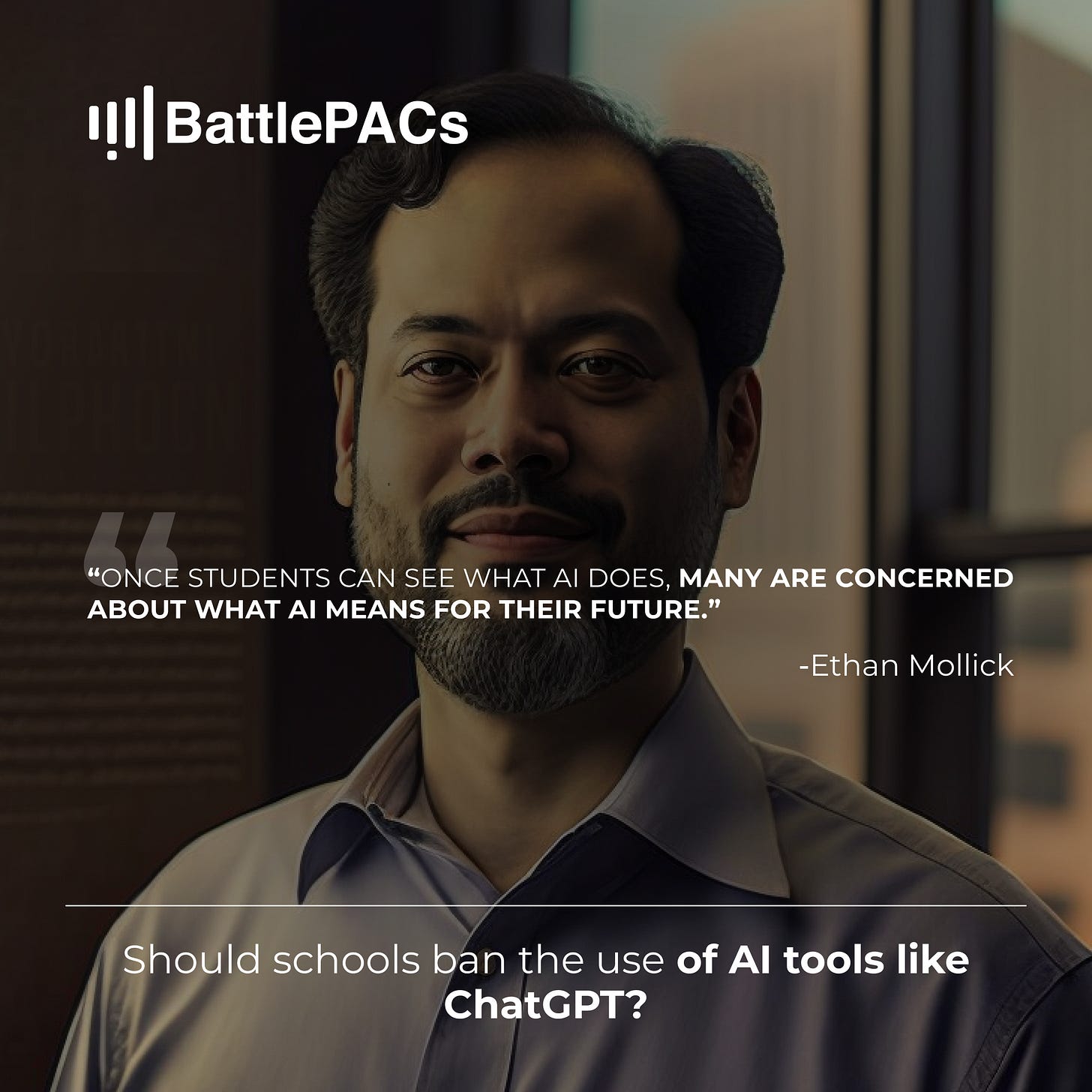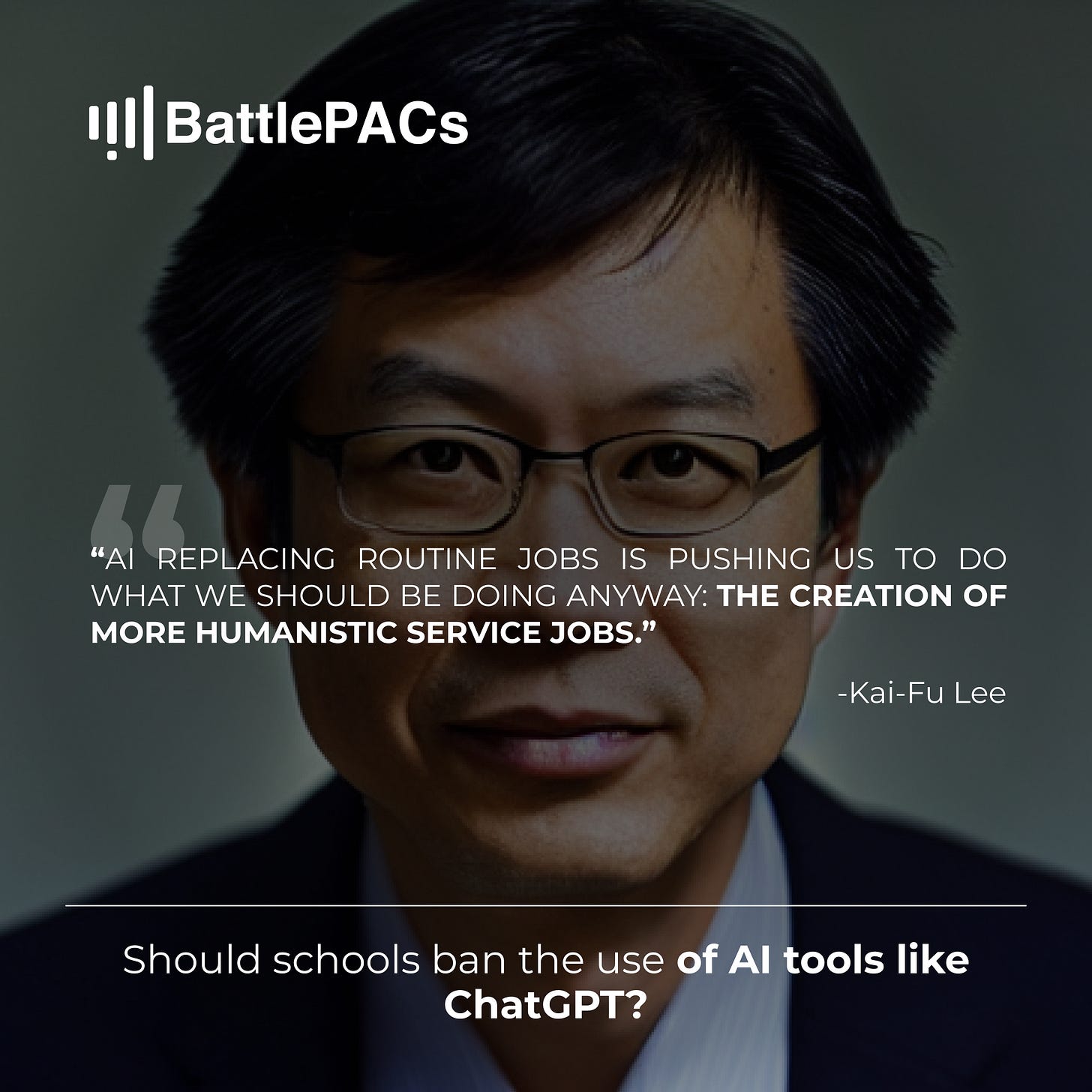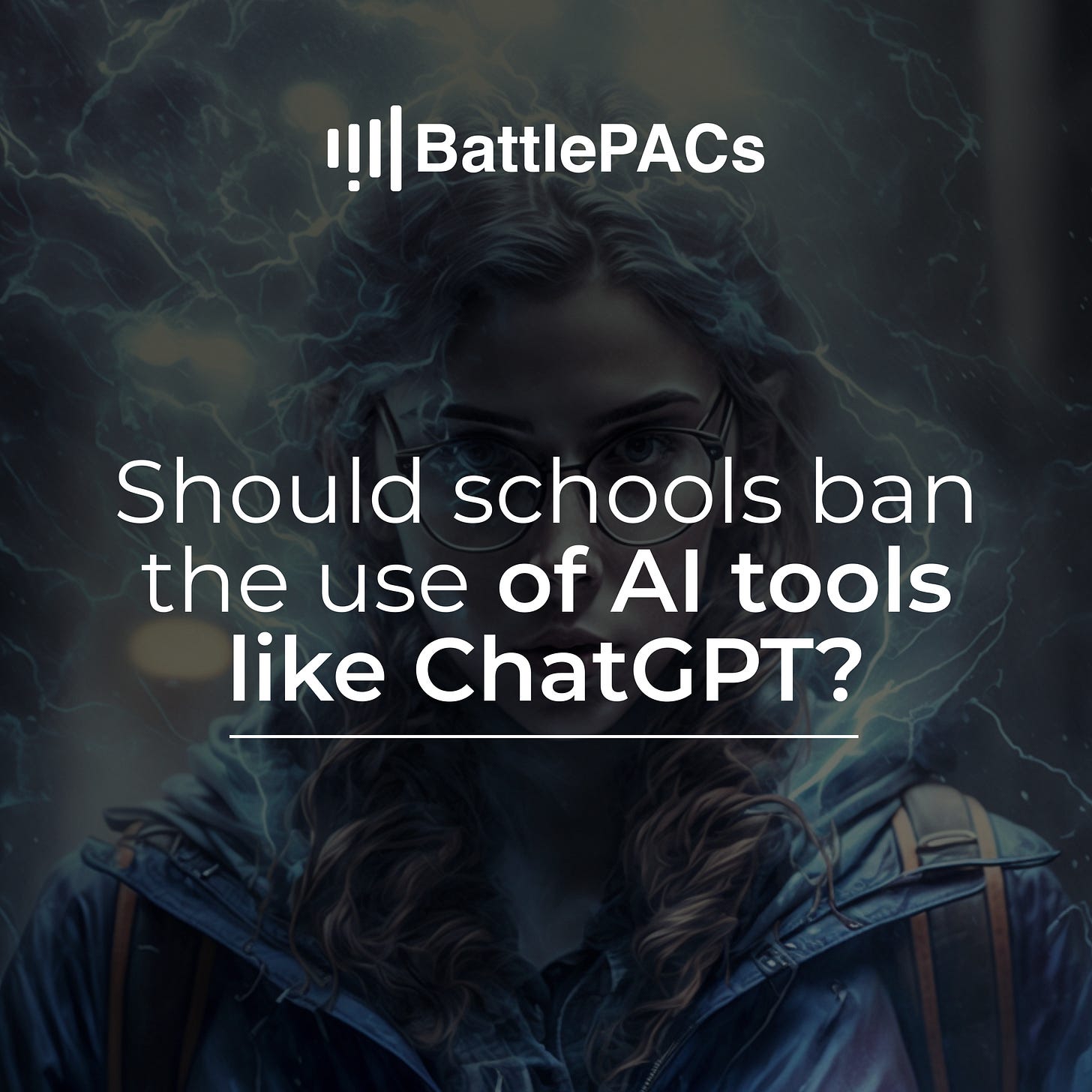How The AI Revolution is Changing Education
ChatGPT and the wave of AI disruption coming for the education sector...
“Once students can see what AI does, many are concerned about what AI means for their future. - Ethan Mollick
The recent explosion of Artificial Intelligence (AI) technology tools like ChatGPT is rapidly changing the university education sector for students and schools alike. AI is set to continue to play a significant role in reshaping the education system in the future, but it could be a rocky road to get there as disruption of the status quo takes effect. Already many schools around the country are either banning ChatGPT use outright, or seriously reconsidering their options and policies around AI and plagiarism. Most colleges are now grappling with the same questions; How should we regulate this? Should we even regulate it? How would we even enforce regulations?
It's not hard to see where the calls for a rethink of school policies are coming from. Recently ChatGPT passed all three parts of the U.S. Medical Licensing Examination as part of a recent research experiment. Meanwhile, At the University of Pennsylvania’s prestigious Wharton School of Business, Professor Christian Terwiesch tested the tool on a typical MBA core course, ‘Operations Management’. He determined the bot would have received a B to B- grade on the exam. This no doubt raises serious concerns for academic staff whose job is to educate and engage students in their subject matter.
Ethan Mollick, also an Associate Professor at The Wharton School, points out in the quote above, that many students too are concerned about what this technology means for their futures in the education space and in the workplace. Or if they aren’t yet, they probably will be soon. Mollick, however, is not anti-AI - far from it. He is a pioneer in the field, and has incorporated clear and permissive rules around use of AI by his students and actually requires its use for completion. As he puts it:
“We don’t have many answers yet, but we should welcome discussion. And teach how to use the tools responsibly.”
Mollick’s rules are a great view into what the future of education might look like. Rather than an outright ban, they include important instructions for responsible AI use such as; thoughtful and high effort use of the tool, not trusting AI results outright without verifying their accuracy yourself, and acknowledging the use of these tools.
Ultimately Mollick believes students will need to learn to effectively and ethically use these tools to prepare them for the future workplace, so his rules are designed to encourage that. Michael Chiu, partner at McKinsey Global Institute (MGI) has described what this future workplace may look like:
“Our research says that 50% of the activities that we pay people to do can be automated by adapting currently demonstrated technologies. We think it’ll take decades, but it will happen. So there is a role for business leaders to try to understand how to redeploy talent. It’s important to think about mass redeployment instead of mass unemployment. That’s the right problem to solve.”
Given that level of likely disruption to future workplaces, many like Mollick believe that education in proper use of AI is crucial to achieving this “redeployment” and preparing students adequately for meaningful employment.
The Future of Education is Now
AI is not entirely new to the education sector. AI tools are in fact already helping many students learn better and achieve better results by providing personalized attention and support.
One notable example is the virtual teaching assistant, "Jill Watson," created by a Georgia Tech professor in 2016. Ashok Goel used AI to build a virtual teaching assistant, called Jill Watson. It turns out that “Jill” receives very positive student evaluations. Students enrolled in Georgia Tech's online artificial intelligence course gave her high marks for accuracy. Little did they know that Jill was in reality a "virtual TA" created by a team of grad students using IBM's Watson, cognitive intelligence platform.
So where could this go in the future? As Goel says in his TED talk:
"What if we could give personal attention to every student when and how he or she needed it? Now I think that would create an educational revolution because learning and teaching would become personal."
As Goel outlines, as the technology develops, AI could play an increasing role in providing wider access to education through online and virtual learning platforms. Many believe this could disrupt and drive change within the status quo University education system in even more profound ways.
How Do We Get There?
As AI technology continues to advance, it has the potential to address some of the biggest challenges in education today and innovate teaching and learning practices. However, the rapid advancement of technology also brings very real risks and challenges that have outpaced policy debates and regulatory frameworks both in Government and in schools.
Many leading AI advocates also maintain that it is important to ensure that AI is used in a way that does not widen technological divides and that its benefits are accessible to all. Liesl Yearsley, CEO of Akin.com also stresses the importance of accessibility and inclusion so as to avoid widening the divide and continuing past biases:
“We should be thinking about the values these systems will hold. How will they make decisions if their decision-making is better than ours? Where does that come from? Do we want to give them human values? The same values that also gave us slavery, sexism, racism — some of the more appalling values we hold?”
Students are a group that is well placed to step up to this task of ensuring wide and diverse access to the training and innovative use of these tools.
The New (Virtual) Reality
It is crucial that we urgently consider both the potential benefits and risks of AI in education, and work to create an education system that utilizes AI in a responsible and ethical manner. This could include giving all students the opportunity to learn about and understand AI, as well as creating consistent regulatory frameworks to ensure its safe and equitable use in education. By doing so, we can create an educational revolution where learning and teaching is not only personal, but also fun and accessible to all students.
To regulate the use of AI in colleges, new approaches and rules may need to be implemented. These could include guidelines for the ethical use of AI, ensuring that AI is used to supplement and enhance human teaching rather than replace it, and creating training programs for educators on how to effectively integrate AI into the classroom.
What this future of the education sector will look like is ultimately up to the students who have the most ‘skin in the game’ as the recipients of education and the shapers of the future workplace.
We want to hear your views on this issue. What do you want the future of education to look like?
Answer our latest question on the issue and win a Voices of America scholarship.








